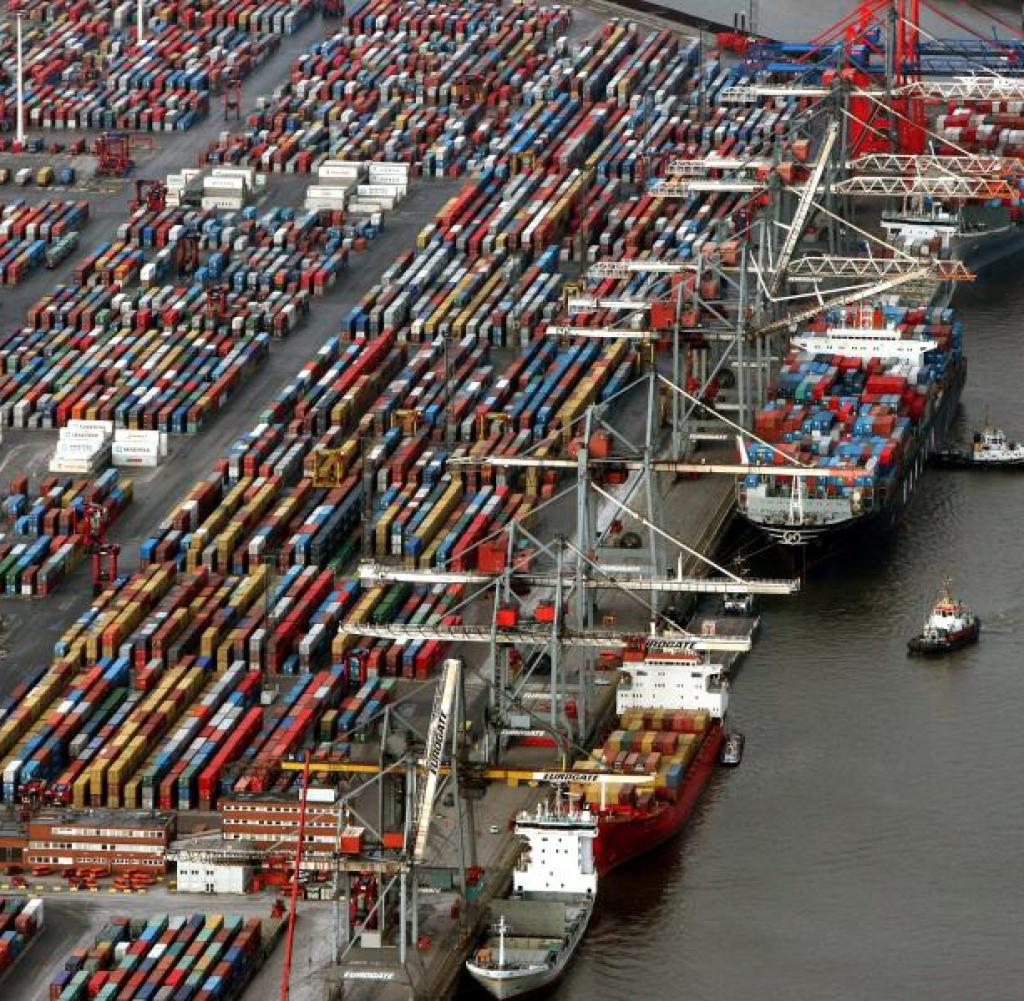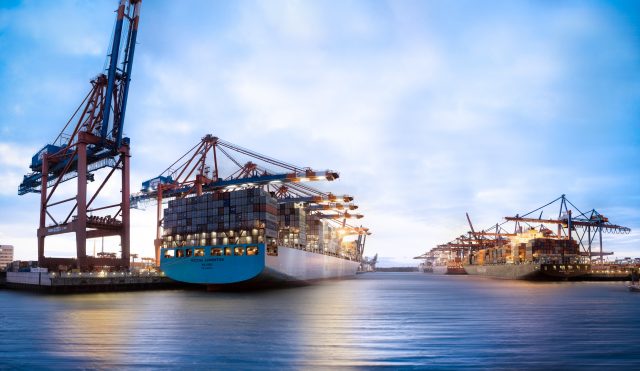
The Bremerhaven Overseas Harbors is the hub for a wide range of im- and export products. In the gigantic harbor you can experience mega-ships, millions of containers and a countless number of automobiles. Numerous locks and bridges fit to the picture of a port city as well as motor boat harbors and marinas. And not to forget museum ships, which keep the German seafaring history alive.
The Overseas Harbors is with a size of 7,8 million m² the largest harbor facility of Bremerhaven City. It consists of the Container-Terminal, Auto-Terminal, Ro-Ro-Facility, Fruit-Terminal, Cargo-Terminal und Cruise-Terminal Columbus Quay.
Bremerhavens’ container terminal “Wilhelm Kaisen” not only boasts the longest sea-quay of Europe it is also right at the top in terms of safety and speed. As one of Europe’s largest container ports it is in every respect one of the most thriving cargo handling centers of the world. The largest special-purpose container ships, 350 meters long, can take on board up to 8,000 standard containers here or unload them using gigantic bridges.

Around 8,000 ship calls per year, almost 300 berths and a total of 43 kilometers of quay for seagoing vessels, more than 1,300 freight trains per week, four state-of-the-art container terminals, three cruise terminals and around 50 facilities specialized in handling roro and breakbulk and all kinds of bulk cargoes, along with about 7,300 logistics companies within the city limits – these are just a few of the factors making the Port of Hamburg to one of the world’s most flexible, high-performance universal ports.
126.3 million tons of cargo crossed the quay walls of Germany’s largest seaport in 2020. That included around 8.5 million standard containers (TEU). Hamburg is accordingly the third largest container port in Europe and in the 18th place on the list of the world’s largest container ports.

